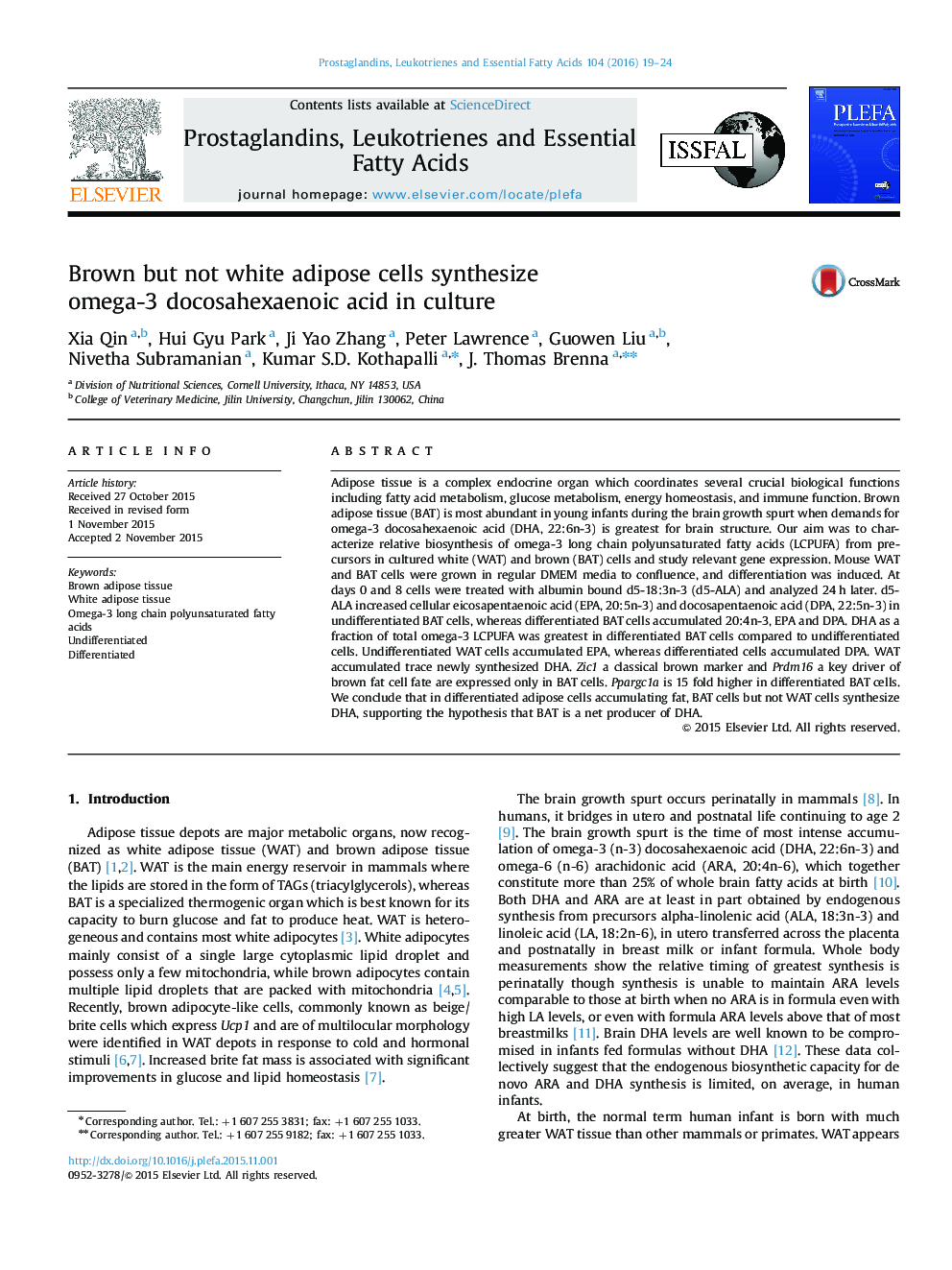| Article ID | Journal | Published Year | Pages | File Type |
|---|---|---|---|---|
| 2777457 | Prostaglandins, Leukotrienes and Essential Fatty Acids (PLEFA) | 2016 | 6 Pages |
•Brown adipose tissue (BAT) is abundant in infancy, located in depots near the head.•Compared to white adipose tissue, BAT cells synthesize omega-3 DHA from ALA.•BAT may serve as a previously unrecognized DHA source when brain demand is greatest.
Adipose tissue is a complex endocrine organ which coordinates several crucial biological functions including fatty acid metabolism, glucose metabolism, energy homeostasis, and immune function. Brown adipose tissue (BAT) is most abundant in young infants during the brain growth spurt when demands for omega-3 docosahexaenoic acid (DHA, 22:6n-3) is greatest for brain structure. Our aim was to characterize relative biosynthesis of omega-3 long chain polyunsaturated fatty acids (LCPUFA) from precursors in cultured white (WAT) and brown (BAT) cells and study relevant gene expression. Mouse WAT and BAT cells were grown in regular DMEM media to confluence, and differentiation was induced. At days 0 and 8 cells were treated with albumin bound d5-18:3n-3 (d5-ALA) and analyzed 24 h later. d5-ALA increased cellular eicosapentaenoic acid (EPA, 20:5n-3) and docosapentaenoic acid (DPA, 22:5n-3) in undifferentiated BAT cells, whereas differentiated BAT cells accumulated 20:4n-3, EPA and DPA. DHA as a fraction of total omega-3 LCPUFA was greatest in differentiated BAT cells compared to undifferentiated cells. Undifferentiated WAT cells accumulated EPA, whereas differentiated cells accumulated DPA. WAT accumulated trace newly synthesized DHA. Zic1 a classical brown marker and Prdm16 a key driver of brown fat cell fate are expressed only in BAT cells. Ppargc1a is 15 fold higher in differentiated BAT cells. We conclude that in differentiated adipose cells accumulating fat, BAT cells but not WAT cells synthesize DHA, supporting the hypothesis that BAT is a net producer of DHA.
